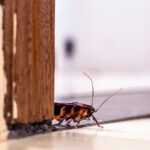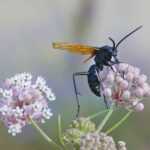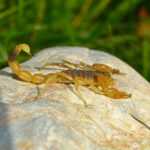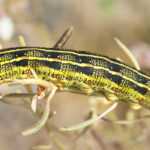Are Cicadas Harmful? Facts You Should Know Today
Discover if cicadas are harmful to people, pets, or plants. Learn the truth about these noisy insects and how they affect your surroundings.
Cicada Season: Are Cicadas Harmful to Humans and Pets?
Are cicadas harmful to humans or pets? In short, no, cicadas do not pose a direct threat to people, pets, or other animals. These winged insects are more of a nuisance than a danger. This article explores various aspects of cicadas, including their environmental benefits, impact on your yard and pets, and offers practical advice for managing their presence.
- Cicadas are harmless to humans and pets; they do not bite, sting, or possess poison.
- While mild digestive upset can occur if pets consume cicadas in large quantities, monitoring and supervision can prevent health issues.
- Cicadas provide valuable environmental benefits by aerating lawns, improving water filtration, and contributing nitrogen to the soil, while protective measures can safeguard vulnerable plants in your yard.
Understanding Cicadas
With approximately 3,000 species of cicadas globally, these winged insects share a fascinating and complex life cycle. In the Eastern United States, we primarily encounter two cicada types: annual cicadas and periodical cicadas. Annual cicadas appear every year, while periodical cicadas have a more intriguing timeline, emerging every 13 or 17 years in massive broods, which is why there are so many cicadas.
Cicada nymphs, after eggs hatch from cicada eggs laid in tree branches, drop to the ground and burrow deep into the soil, sometimes as far as two feet down. Here, they latch onto tree roots and feed until it’s time to surface. When these nymphs are ready, they emerge from the ground, shed their exoskeletons, and transform into adult cicadas, a process that typically spans three to four weeks during which they mate and lay eggs.
The sound of cicadas is one of their most distinguishing features. Male cicadas produce a loud, distinctive mating call by vibrating special membranes on their bodies, attracting females. Despite the overwhelming number of cicadas that can emerge at once, these insects are not locusts, and their primary goal is reproduction rather than destruction.
Knowing the life cycle and behavior of cicadas can demystify these often-misunderstood bugs. This foundational knowledge is crucial as we explore their impact on humans and pets, providing practical advice and reassurances.
Do Cicadas Bite or Sting?
One of the most common fears about cicadas is whether they bite or sting. The good news is that cicadas are not equipped to harm humans, pets, or other animals. Their mouthparts are specifically adapted for extracting sap from plants, not for biting us. While they might occasionally attempt to feed on humans by mistake, cicadas hurt their efforts are harmless and non-painful.
Cicadas’ physical structure, including their short antennae and prominent compound eyes, are designed for interaction with their environment rather than aggression. So, if you find yourself surrounded by these buzzing winged insects, rest assured that they pose no threat to you, your pets, or mature trees.
Are Cicadas Poisonous?
Another common concern is whether cicadas are poisonous. The simple answer is no, cicadas are not poisonous and do not pose a direct threat to humans, pets, or other animals. However, it’s worth noting that consuming large quantities of cicadas can cause gastrointestinal irritation in pets, mainly due to their hard exoskeletons.
In rare cases, some dogs and cats may develop allergies to cicadas, similar to shellfish allergies, leading to skin irritations. While these instances are uncommon, pet owners should be aware and monitor their pets’ interactions with cicadas.
Impact on Pets: What You Need to Know
Cicadas generally do not pose a significant risk to pets, but there are a few things pet owners should keep in mind. Ingesting a few cicadas might lead to mild stomach upset, but they are generally harmless unless eaten in large quantities. The hard exoskeletons of cicadas can pose digestive challenges for pets if consumed in excess, leading to vomiting or diarrhea.
Keeping a close eye on your pets during cicada season helps prevent excessive consumption. Vigilance can minimize potential health issues, ensuring your furry friends remain safe and healthy.
Signs of Overeating in Pets
If your pets have eaten too many cicadas, they might exhibit several symptoms. These include:
- Excessive drooling
- Vomiting
- Diarrhea
- Abdominal pain
- Lethargy
These signs indicate that they may have ingested more cicadas than their stomachs can handle. Some people even choose to eat cicadas.
If these symptoms appear in your pets, seeking veterinary care is crucial. Prompt attention can address digestive issues and facilitate a quick recovery.
Managing Pet Interactions
Reduce your pets’ exposure to cicadas by walking them during cooler parts of the day when cicadas are less active. Keeping windows and doors closed prevents cicadas from entering your home. Training pets with commands like ‘Leave it’ can also help them avoid cicada ingestion.
Supervising your pets outdoors and redirecting them with treats minimizes the risk of cicada consumption. Regularly clearing cicada exoskeletons from your yard further reduces this risk.
Cicadas and Your Yard
Cicadas can have both negative and positive impacts on your yard. While they primarily focus on laying eggs in younger plants, established trees usually remain unharmed. The damage from cicada hatching larvae is generally minor and temporary, affecting mostly young trees and shrubs.
Protect your yard by monitoring cicada emergence and using protective coverings like netting to safeguard vulnerable plants. After cicadas emerge, restore lawns by raking the turf and adding grass seed to mitigate short-term changes.
Protecting Trees and Plants
Cover young trees and shrubs with netting or cheesecloth to protect them from cicada damage. Wrapping tree trunks in foil barrier tape deters nymphs from climbing. Pruning trees and shrubs before cicada season reduces egg-laying spots, further minimizing potential damage.
Implementing these measures can significantly reduce the impact of cicadas on your young trees and tree bark plants, ensuring they remain healthy throughout the season.
Benefits to Soil and Lawn
Cicadas contribute valuable environmental benefits by aerating lawns and improving water filtration in the soil. When cicadas die and decompose, they release nitrogen and other nutrients, acting as natural fertilizers that enhance soil quality and promote plant growth.
Appreciating the unique life cycle of cicadas and their role in the ecosystem can help us see their presence as beneficial rather than purely problematic.
Living with Cicadas: Embrace the Buzz
Living with cicadas can be a unique and enriching experience. Their constant hum creates a sense of connection to nature, enhancing outdoor activities during their emergence. A wildlife-friendly garden supports cicadas and other beneficial insects, contributing to a balanced ecosystem.
Educational activities about cicadas can foster greater appreciation for these insects and their fascinating life cycle. Embracing the buzz turns cicada season into an opportunity for learning and enjoyment.
Cicada Killers: Friends or Foes?
Cicada killer wasps, though intimidating in appearance, play an important ecological role. Female cicada killers paralyze cicadas with a precise sting and use them as a valuable food source for their larvae. This natural predation helps control cicada populations, maintaining a balanced ecosystem.
Control measures for cicada killers, like using carbaryl dust, are often unnecessary due to their limited harm. Their presence reminds us of the intricate web of interactions that sustain our environment.
Cicadas, while often misunderstood, play a significant role in our ecosystem. They are not harmful to humans, pets, or mature trees, and their presence can even benefit our gardens and lawns. By understanding their life cycle and taking simple precautions, we can coexist peacefully with these fascinating bugs.
Let’s embrace the buzz and appreciate the natural phenomena that these remarkable winged insects bring. For those needing assistance with pest management, professional pest control offers expert services to help maintain a comfortable and pest-free environment.
Frequently Asked Questions
Are cicadas bad to have in your yard?
Cicadas are generally harmless and provide environmental benefits, but they can damage small trees and shrubs. Therefore, it’s important to monitor your plants if they are present in your yard.
Is it safe to touch a cicada?
It is safe to touch a cicada, as they are harmless and do not bite or sting. You can handle them without worry for yourself, pets, or plants.
What happens if a cicada bites you?
Cicadas cannot sting or cause significant harm, as any potential bite may only result in a mild, temporary prickly sensation. Overall, you can rest assured that cicada interactions are not dangerous.
Are cicadas poisonous to pets?
Cicadas are not poisonous to pets, but if consumed in large quantities, they may cause mild gastrointestinal irritation. It’s best to monitor your pets if they eat cicadas.
How can I protect my young trees from cicadas?
To protect your young trees from cicadas, cover them with netting or cheesecloth and prune them before the cicada season begins. This proactive approach minimizes potential damage.



